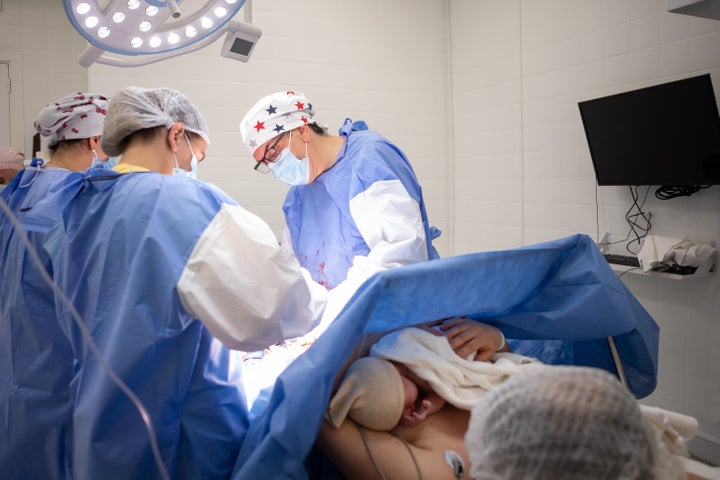
A huge quarter of UK mums give birth through a C-Section, though so many go through it, not many know the history behind it!
The operation is usually done because it’s the safest option for your baby at the time if you are unable to give birth vaginally.
There could be many different reasons your doctor recommends a C-Section, it could be because your baby is breech, or because your labour isn’t progressing how it should.
Alongside this it could be because you have a low-lying placenta, pregnancy-related high blood pressure, certain infections, untreated HIV or because your baby is not getting enough oxygen and nutrients.
But what is a C-section and why is it even called that?
What is a C-section?
A C-section is an operation carried out to take your baby out of the womb. A cut is made on your lower tummy and womb to make sure the baby can be pulled out.
The NHS explains this cut is usually around 10 to 20cm long and is mostly done under spinal or epidural anaesthetic where the parent is awake throughout but numbed from lower part of their body.
Although you are awake, you don’t feel much apart from pulling and tugging. A screen is also placed so that you cannot see the operation yourself.
What does a C-section stand for?
A C-section is an acronym for ‘caesarean’ section.
Is Caesarean section named after Julius Caesar?
C-sections did exist before Julius Caesar was born, but because they were carried out on mums that were either dying or dead, there are no narratives of it.
However, the first written record of a mother and baby surviving a C-section is from Switzerland dated back to 1500.
A woman was unable to deliver her baby after being in labour for several days with the help of 13 midwives.
So, husband Jacob Nufer actually performed the operation on his wife! But the story was only written down more than 80 years later, so historians still question its validity.
One theory of how the word Caesarean came around is due to Roman Law under Julius Caesar where he decreed those who are fated by childbirth must be cut open.
However, there is no evidence of this.
Another theory is that the word originates from the Latin verb ‘caedare’ which means ‘to cut’. Healthline Magazine wrote that the Latin word ‘caesones’ was used for infants born by postmortem operations.
What are the risks of a Caesarean birth?
Like any type of major surgery a C-section does come with risks, however it is generally safe.
The main complications with a Caesarean are:
- Infection of the wound or womb lining.
- Blood clots.
- Excessive bleeding.
- Damage to nearby areas, such as the bladder or the tubes that connect the kidneys and bladder.
- Temporary breathing difficulties in your baby accidentally cutting your baby when your womb is opened.
If you have any worries, it’s best to speak with your doctor about your concerns.